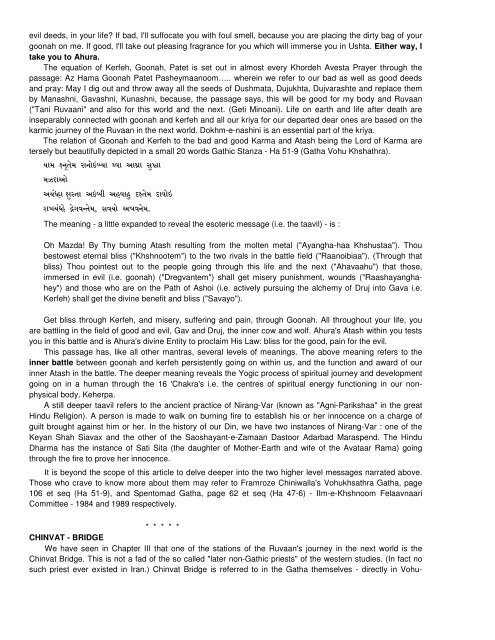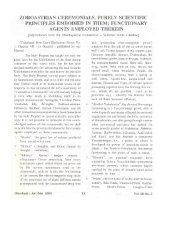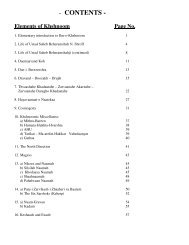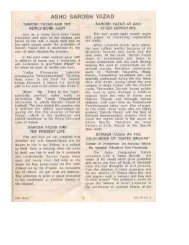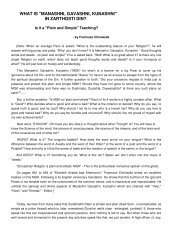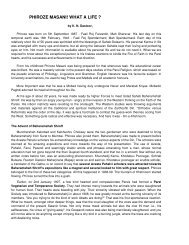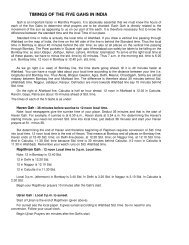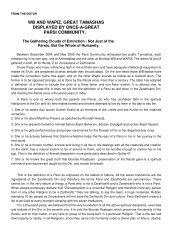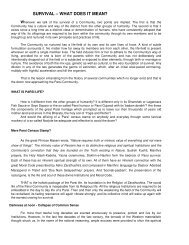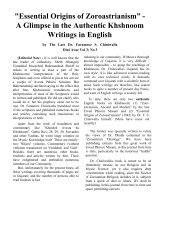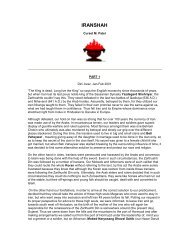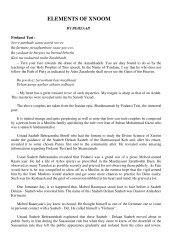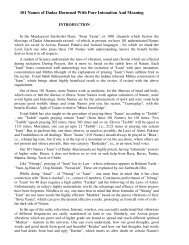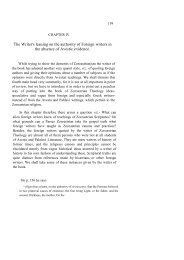dokhm-e-nashini - Traditional Zoroastrianism: Tenets of the Religion
dokhm-e-nashini - Traditional Zoroastrianism: Tenets of the Religion
dokhm-e-nashini - Traditional Zoroastrianism: Tenets of the Religion
Create successful ePaper yourself
Turn your PDF publications into a flip-book with our unique Google optimized e-Paper software.
evil deeds, in your life? If bad, I'll suffocate you with foul smell, because you are placing <strong>the</strong> dirty bag <strong>of</strong> your<br />
goonah on me. If good, I'll take out pleasing fragrance for you which will immerse you in Ushta. Ei<strong>the</strong>r way, I<br />
take you to Ahura.<br />
The equation <strong>of</strong> Kerfeh, Goonah, Patet is set out in almost every Khordeh Avesta Prayer through <strong>the</strong><br />
passage: Az Hama Goonah Patet Pasheymaanoom….. wherein we refer to our bad as well as good deeds<br />
and pray: May I dig out and throw away all <strong>the</strong> seeds <strong>of</strong> Dushmata, Dujukhta, Dujvarashte and replace <strong>the</strong>m<br />
by Manashni, Gavashni, Kunashni, because, <strong>the</strong> passage says, this will be good for my body and Ruvaan<br />
("Tani Ruvaani" and also for this world and <strong>the</strong> next. (Geti Minoani). Life on earth and life after death are<br />
inseparably connected with goonah and kerfeh and all our kriya for our departed dear ones are based on <strong>the</strong><br />
karmic journey <strong>of</strong> <strong>the</strong> Ruvaan in <strong>the</strong> next world. Dokhm-e-<strong>nashini</strong> is an essential part <strong>of</strong> <strong>the</strong> kriya.<br />
The relation <strong>of</strong> Goonah and Kerfeh to <strong>the</strong> bad and good Karma and Atash being <strong>the</strong> Lord <strong>of</strong> Karma are<br />
tersely but beautifully depicted in a small 20 words Gathic Stanza - Ha 51-9 (Gatha Vohu Khshathra).<br />
;ke {uwrse jkuksbC;k Fok vkFkzk lq[kzk<br />
e>nkvks<br />
v;a?gk {kqLrk vbch vgokgq n{rse nkoksb<br />
jkÐk;a?gs æsxoUrse, lo;ks vÐkouse.<br />
The meaning - a little expanded to reveal <strong>the</strong> esoteric message (i.e. <strong>the</strong> taavil) - is :<br />
Oh Mazda! By Thy burning Atash resulting from <strong>the</strong> molten metal ("Ayangha-haa Khshustaa"). Thou<br />
bestowest eternal bliss ("Khshnootem") to <strong>the</strong> two rivals in <strong>the</strong> battle field ("Raanoibiaa"). (Through that<br />
bliss) Thou pointest out to <strong>the</strong> people going through this life and <strong>the</strong> next ("Ahavaahu") that those,<br />
immersed in evil (i.e. goonah) ("Dregvantem") shall get misery punishment, wounds ("Raashayanghahey")<br />
and those who are on <strong>the</strong> Path <strong>of</strong> Ashoi (i.e. actively pursuing <strong>the</strong> alchemy <strong>of</strong> Druj into Gava i.e.<br />
Kerfeh) shall get <strong>the</strong> divine benefit and bliss ("Savayo").<br />
Get bliss through Kerfeh, and misery, suffering and pain, through Goonah. All throughout your life, you<br />
are battling in <strong>the</strong> field <strong>of</strong> good and evil, Gav and Druj, <strong>the</strong> inner cow and wolf. Ahura's Atash within you tests<br />
you in this battle and is Ahura's divine Entity to proclaim His Law: bliss for <strong>the</strong> good, pain for <strong>the</strong> evil.<br />
This passage has, like all o<strong>the</strong>r mantras, several levels <strong>of</strong> meanings. The above meaning refers to <strong>the</strong><br />
inner battle between goonah and kerfeh persistently going on within us, and <strong>the</strong> function and award <strong>of</strong> our<br />
inner Atash in <strong>the</strong> battle. The deeper meaning reveals <strong>the</strong> Yogic process <strong>of</strong> spiritual journey and development<br />
going on in a human through <strong>the</strong> 16 'Chakra's i.e. <strong>the</strong> centres <strong>of</strong> spiritual energy functioning in our nonphysical<br />
body, Keherpa.<br />
A still deeper taavil refers to <strong>the</strong> ancient practice <strong>of</strong> Nirang-Var (known as "Agni-Parikshaa" in <strong>the</strong> great<br />
Hindu <strong>Religion</strong>). A person is made to walk on burning fire to establish his or her innocence on a charge <strong>of</strong><br />
guilt brought against him or her. In <strong>the</strong> history <strong>of</strong> our Din, we have two instances <strong>of</strong> Nirang-Var : one <strong>of</strong> <strong>the</strong><br />
Keyan Shah Siavax and <strong>the</strong> o<strong>the</strong>r <strong>of</strong> <strong>the</strong> Saoshayant-e-Zamaan Dastoor Adarbad Maraspend. The Hindu<br />
Dharma has <strong>the</strong> instance <strong>of</strong> Sati Sita (<strong>the</strong> daughter <strong>of</strong> Mo<strong>the</strong>r-Earth and wife <strong>of</strong> <strong>the</strong> Avataar Rama) going<br />
through <strong>the</strong> fire to prove her innocence.<br />
It is beyond <strong>the</strong> scope <strong>of</strong> this article to delve deeper into <strong>the</strong> two higher level messages narrated above.<br />
Those who crave to know more about <strong>the</strong>m may refer to Framroze Chiniwalla's Vohukhsathra Gatha, page<br />
106 et seq (Ha 51-9), and Spentomad Gatha, page 62 et seq (Ha 47-6) - IIm-e-Khshnoom Felaavnaari<br />
Committee - 1984 and 1989 respectively.<br />
* * * * *<br />
CHINVAT - BRIDGE<br />
We have seen in Chapter III that one <strong>of</strong> <strong>the</strong> stations <strong>of</strong> <strong>the</strong> Ruvaan's journey in <strong>the</strong> next world is <strong>the</strong><br />
Chinvat Bridge. This is not a fad <strong>of</strong> <strong>the</strong> so called "later non-Gathic priests" <strong>of</strong> <strong>the</strong> western studies. (In fact no<br />
such priest ever existed in Iran.) Chinvat Bridge is referred to in <strong>the</strong> Gatha <strong>the</strong>mselves - directly in Vohu-


